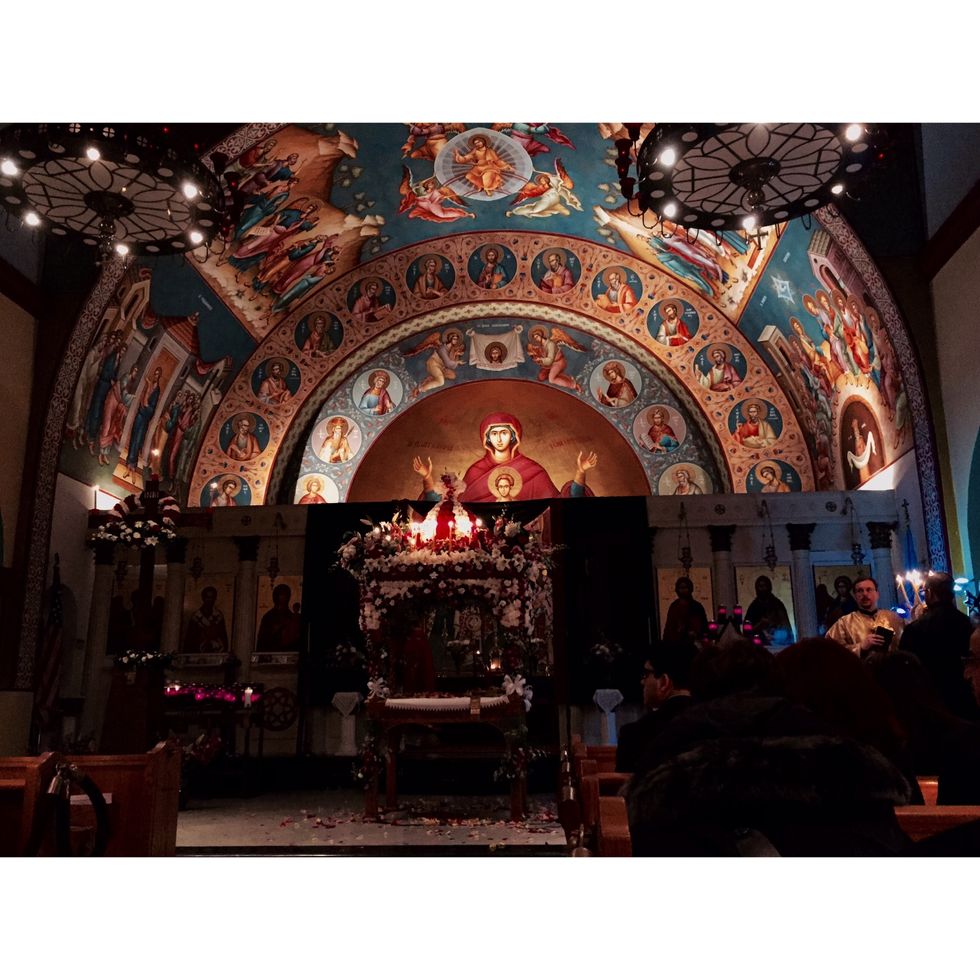Holy Week is the most intricate times of the Church. Everything from what you eat, to the way dress, to how you live your daily life is altered. During Holy Week while all seven days are very important, I wanted to focus on four specific days: Wednesday through Saturday.
Wednesday: Holy Unction
During the Wednesday of Holy Week, two services are held so that people may get oil from the priest. Holy unction, the day we as Orthodox Christians receive oil can sort of be compared to Ash Wednesday for those of Catholic faith.
After the service is over, we go up to the Priest as they take a small brush, dip it in oil that has been blessed, and make the sign of the cross on your forehead, chin, tops of your hands, and the palm of your hands.
This is to signify and provide good health to those who receive. This oil is also the oil that priests travel with to give to those who may be too sick to attend church services.
Thursday: Holy Thursday
Also known as the longest service during Holy Week, during this day is when the church is decorated in the color purple, and the priest is wearing his purple robes.
There are four key points to this service: the washing of the disciples' feet, the institution of the Sacrament of the Holy Eucharist at the Last Supper, the agony in the garden of Gethsemane, and and the betrayal of Christ by Judas.
The priest walks us through a decent portion of the bible and reads as he takes us through what Christ went through, each time a gospel is read, a large glass purple candle is lit.
Friday: Good Friday
For me, this is the most beautiful day the church has to offer. The Byzantine style hymns that are sung, gathered with the Epitafio adorned with flowers makes those who attend sit there in awe.
On this day, the Church commemorates the death of Christ on the cross. During Holy Friday, there are a series of services held, one very early in the morning, one in the afternoon, and one at night.
The one held in the morning is to signify Christs' death and the earthquakes that occurred. The one in the afternoon is when Christ is lifted and taken off the cross, and the one at night is his funeral/burial.
The lamentations are sung, signifying that Christ has died for our sins and his followers singing for him. During the service that occurs at night, the large wooden "tomb" is carried outside and around the area of the church just as a funeral procession would.
Saturday: Holy Saturday
Holy Saturday is the actual burial of Christ and is decent to Hades, it is the day of His Crucifixion and Resurrection. This day also has a series of services but the one that starts at 10 pm is the one that leaves people stunned. During this service is when the Church closes its lights and is pitch black.
All of a sudden, the priest or Arch Bishop light one single candle in the altar. From then, the parish council goes up to the priest and at once, puts all their candles to the one the priest or Arch Bishop is carrying so they may light their candles.
After that, the council travels to the different isles and lights the candle of whoever is on the end. From there, they turn to the people next to them and light up other candles. While throughout Holy Week there is always a hymn being sung and the church is never quiet, during this time the church is completely silent.
At about 11:30 everyone exits the church along with the tomb of Christ. At 12 am, there is a knock on the church doors, the doors swing open and we sing that Christ has Risen.
Holy Week is my favorite time of the year. It is a time to self-reflect and realizes that Christ has died for our sins, and that is a BIG deal.
We restrain from meat, meat products, dairy, oil, wine, and anything that may bleed (including eggs and fish). You may not wear the color white and are not to work (if possible) during this week. Basically, Holy Week is a big deal.



















